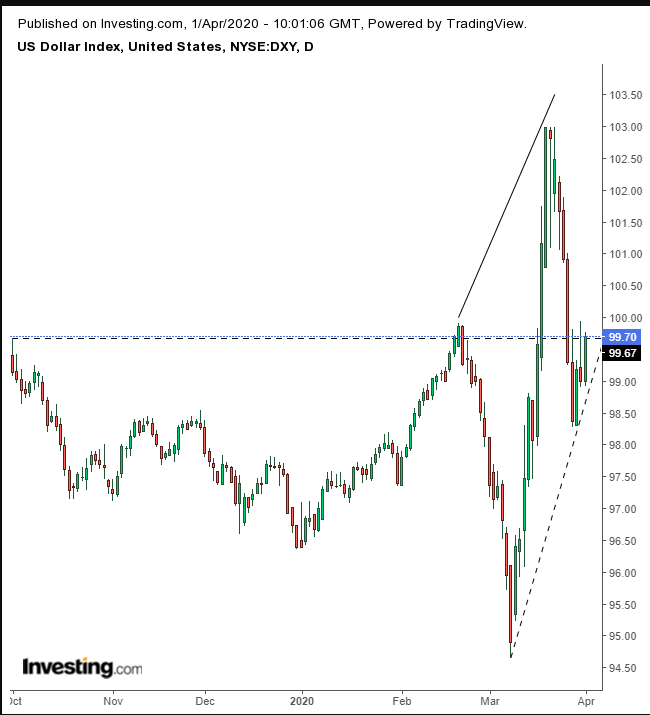The global crisis over the coronavirus pandemic has provoked significant demand for the U.S. dollar as investors worldwide massively unwound risk positions in favor of safe havens — chiefly Treasurys.
The greenback weakened yesterday after the Fed introduced measures to facilitate a steady supply of dollars to global central banks. The U.S. central bank made it easier for foreign central banks to access USD by allowing them to exchange Treasurys for overnight dollar loans, for example.
Demand during the previous quarter had pushed the dollar up 2.8%. Some see the Fed's action as suppressing that rise: “The dollar will struggle to extend gains significantly at the moment, just because of the relative supply of cash coming in from the Fed in dollar terms,” said Shaun Osborne, chief FX strategist at Scotiabank in Toronto.
We, however, are seeing signs the dollar may extend its advance.

Yields, including for the 10-year note, have completed a back-to-back bearish pattern — a pennant following a rising flag.
Still, it's not clear whether the Fed measures might undo the pressure on demand. If they don't work, the dollar will keep pushing higher. The chart below helps illustrate the parameters.

The dollar bounced today, off a potential uptrend line and the bottom of a rising channel. If the global reserve currency manages to climb past 100.50 — retracing one third of the fall from the March 19 high and overcoming a resistance since October — we consider the March 30 low, the second trough that would complete the required ascending series of peaks and troughs, to be the signal there's a new uptrend ahead.
Should this occur, we’d make a buy recommendation for the dollar, despite the Fed's efforts to lessen pressure on demand.
Trading Strategies
Conservative traders would wait for a close above 101.00, then wait for a return move to retest the channel bottom.
Moderate traders would be content with a climb past 100.50 and possibly wait for a buying dip, but not necessarily for confirmation of the channel bottom.
Aggressive traders may buy at will according to their risk aversion.
Trade Sample - For entry upon a dip
- Entry: 99.50
- Stop-Loss: 98.75, below Tuesday’s low
- Risk: 75 pips
- Target: 101.75
- Reward: 225 pips
- Risk:Reward Ratio: 1:3
